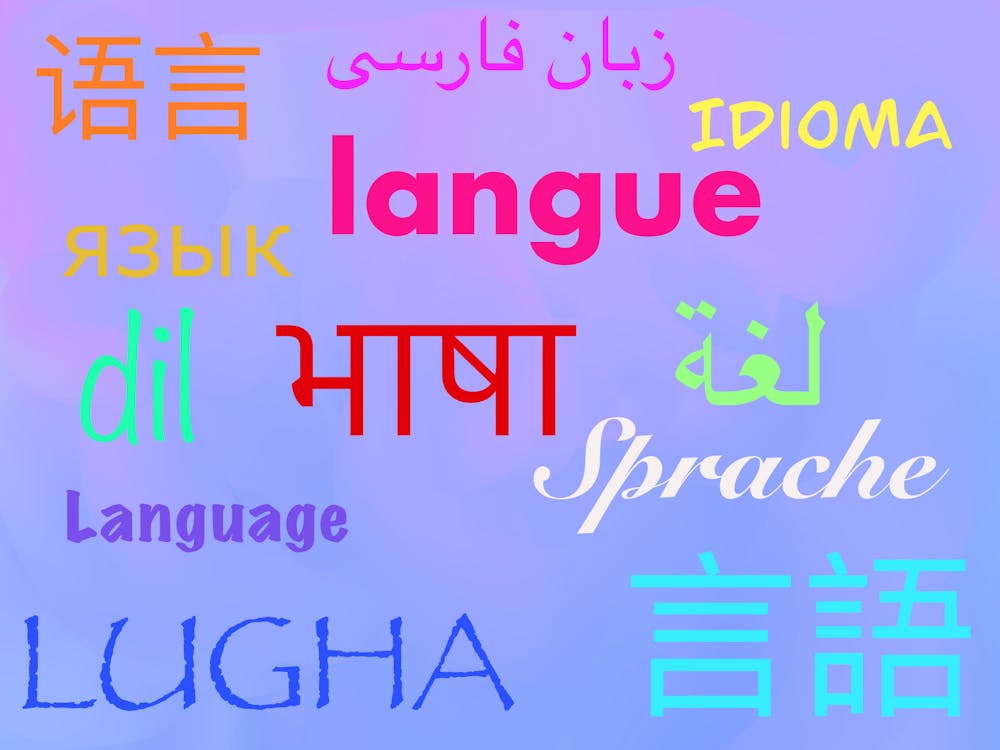Experts estimate that at least half of the world is bilingual. Yet, only 20 percent of Americans speak a second language. This extreme disparity is often attributed to insufficient investment in language education across all levels of the American education system. For example, while 92 percent of European students at lower levels study a world language, only 20 percent of K-12 students in America study a world language. Moreover, most European countries have national mandates which require students to take at least one year of a world language, and over 20 European nations have mandates which require two languages. The United States has no such national mandate, and only 10 states even require language education for high school students. In short, the United States’ language education program is woefully inadequate and translates to embarrassingly poor language skills.
The University has recognized this fact and endeavored to improve students’ linguistic abilities through general education requirements. Most undergraduate students are required to demonstrate proficiency in one world language by reaching the 2020-level. This requirement is intended to “[prepare] students to interact and collaborate with multilingual communities across the globe.” The twin goals of interaction and collaboration are made all the more necessary by globalization and the increasing multiculturalism of our nation — it is hard to collaborate across cultures when you cannot even communicate. However, while the world language requirement is able to prepare students for daily interactions with multilingual groups, it does not mandate enough hours to enable collaboration. As such, the University must require more extensive language education in order to truly equip students to meet both the stated requirement goal and the linguistic and cultural demands of a globalized world.
To be clear, the shortcomings of the current language requirement are not the fault of language professors or language departments. They have been given an impossible task, a task which erroneously implies that the proficiency needed for cross-linguistic interaction and collaboration is achievable in four short semesters or less.
Students who have completed the University language requirement will have 230 hours of language instruction under their belt. The American Council on the Teaching of Foreign Languages, a language certification program commonly used to craft curricula in the United States, estimates that it takes at least 240 hours to reach “intermediate mid” proficiency. Therefore, University students who fulfill the minimum requirement will only be able to engage in short conversations regarding predictable and often simple topics. For example, a student would likely be able to obtain medicine at a pharmacy but might not be able to describe their symptoms to a doctor. In short, these students are only competent in language scenarios which are limited to their immediate surroundings, a competency which does not achieve the stated goals of the University's language requirement.
Kate Neff, director of the Spanish deparment’s language program and senior lecturer, said that students who successfully complete the 2020-level have an elementary proficiency.
“[Students] can talk about very familiar topics, about very concrete topics,” Neff said. “[They] can make [themselves] understood to a sympathetic listener. And [they] can understand native speakers if they are speaking slowly.”
In the words of our requirement, they can interact with multilingual groups — but only in ideal conditions. The sort of abstract and complex language abilities which collaboration necessitates are still underdeveloped at the 2020 level. Bilal Maanaki, senior lecturer in the Department of Middle Eastern and South Asian Languages and Culture, said that anything beyond daily interactions would be challenging for students who completed up to the 2020-level.
“With relation to daily interaction they will be able to interact [with] no problem,” Maanaki said, “But when it comes to matters that [have] to do with politics, society at large, scientific terms … stuff like that would be hard.”
The proficiency achieved at the 2020-level is certainly important, but ultimately only amounts to survival language skills. For students to be able to genuinely collaborate with multilingual groups both professionally and socially, they must have proficiency beyond their immediate circumstances and daily life.
In the absence of sufficient hours to teach students the linguistic patterns needed for multilingual collaboration, language professors are left hoping that students will independently continue their language learning.
“I believe the world language requirement opens doors.” Alicia Lopez Operé, director of undergraduate programs for the Spanish Department said. “The hope is that students walk through that door.”
This is a commendable goal, one which undergirds the theoretical backing for general education requirements more broadly. And in an ideal society where language proficiency is highly valued from a young age, a university requirement which opens a door might be sufficient. However, the current state of language learning in the United States — specifically the lack of a national mandate and the lack of cultural pressure to learn a language — means that universities have an obligation to do more than simply open doors to language. Rather, they must require language education which fully equips students to be able to handle complex, multilingual situations.
At the University this means increasing the world language requirement by at least one semester and preferably two, well exceeding the ACTFL intermediate-mid hour suggestions. In order to avoid the impression of impeding students’ majors, this increase should work to specifically equip students for a multilingual professional world. University language departments already offer courses such as Medical Spanish, Business Arabic and French for Global Development. These offerings should not only be expanded to other fields such as engineering, politics and psychology but should also be interwoven into the current general education curriculum. In doing so, the University would uphold its responsibility to produce linguistically and culturally competent graduates and also provide these graduates with clear practical applications of their language skills.
Naima Sawaya is the Executive Editor of The Cavalier Daily. She can be reached at opinion@cavalierdaily.com.
The opinions expressed in this column are not necessarily those of The Cavalier Daily. Columns represent the views of the authors alone.







